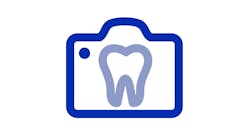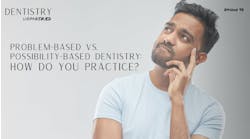by Dan Sindelar, DMD
We are now entering a new era of health. Why, when, where, and how did the mouth become separate from the rest of the body? The latest research is bringing to light an incontrovertible truth: oral health is an integral part of preventive cardiology, a substantial adjunct to diabetic care, and a major part of the prevention of any inflammatory disease.
Research has shown that nearly half of all health-care expenses in the U.S. come from preventable chronic illnesses such as heart attacks, the No. 1 cause of death, and strokes, the No. 1 cause of disability. Oral health belongs alongside diet and nutrition, physical activity, stress management and tobacco cessation, and sleep as a fifth pillar of wellness because, like these essential aspects of health, it plays a large part in the prevention and management of these chronic conditions.
Oral inflammation has a huge effect on overall inflammatory disease, and its elimination is not only helpful but is being demanded by the medical community. At a recent heart symposium that I attended at the Cleveland Clinic, Dr. Marc Penn, MD, PhD, former director of the cardiac intensive care unit at Cleveland Clinic, boldly and correctly stated, “Don’t ever forget to look at periodontal disease as an important source of inflammation in reference to cardiovascular disease.” This opinion was mirrored by my respected colleague, Dr. Bradley Bale, MD, who stated (to a room full of cardiologists), “One of the reasons heart attacks are not being prevented is because health-care providers are not recognizing the link between cardiovascular disease and oral-systemic health.”
So yes, oral health not only should be the fifth pillar of wellness; it already is.
What evidence is there that oral health is a major player in systemic health?
Oral inflammation is the body’s response to any problem in the mouth, and it shows up not only in periodontal disease — which afflicts 85% of the U.S. adult population and is the most common inflammatory disease in humans — but also due to crowding, abscessed teeth, cancers, poor habits, partially erupted third molars, and caries. It’s so much more than bleeding gums. The mouth is the portal of entry for most of the pathogenic bacteria that affect our health, and a location for potential infections that affect us adversely.
The mouth is the portal of entry for most of the pathogenic bacteria that affect our health, and a location for potential infections that affect us adversely.
Oral inflammation results in an inflammatory response, the by-products of which can and do spread throughout the body to influence all inflammatory diseases found in human beings.
One of my best friends, Lloyd Rudy — who, incidentally, is considered one of the most influential cardiovascular surgeons in cardiology — puts it best when he compares the body’s inflammatory response to infection to a house fire. Inflammation is fire. When vascular walls around the heart catch fire, we have heart attacks and strokes. Think of the body as a house, and the mouth as the kitchen — when we have gum disease, we have a “fire” in our “kitchen” that may “burn down the house.”
Inflammatory diseases that can be triggered by oral inflammation include cardiovascular disease, diabetes, kidney disease, Alzheimer’s disease, pneumonia, preterm and low-weight births, and various cancers. If we view oral health as a major pillar of overall health, it becomes even more important for every individual to have a healthy mouth.
Does it sound too good to be true? Here are just a few statistics that suggest a strong correlation between oral and systemic health:
- Even as few as two professional cleanings per year can reduce a person’s risk for heart attack by 25%, according to research presented at a recent American Heart Association meeting.
- Dental sleep therapy can provide a simple solution to the 20 million people who suffer from obstructive sleep apnea and who are therefore at greater risk for cardiovascular disease. Effective treatment of a sleep apnea patient can add 10 years to a person’s life.
- Appropriate periodontal treatment has been shown to be as effective in lowering the A1C levels in diabetic patients as most medications, but without the adverse side effects.
- Reduction in oral inflammation in diabetic patients can reduce their yearly overall health-care costs by up to 25%.
- Case studies show that Lp-PLA2 levels can be lowered by reduction of oral inflammation.
- Oral biofilm-associated disease surpassed heart disease in total cost of health care, according to a study released recently.
How does this affect the average dentist?
If you’re wondering how drastically your job will change thanks to this evolution in dentistry, don’t worry. We already have many ways to address most of these problems. The biggest difference right now, in my opinion, is that our work has new purpose and we are able to customize care with different combinations of treatment. Personally, I approach each of my patients in a unique way that is based on the overall health risk factors they present in my office. It’s not just a dental checkup — it’s a total wellness exam that includes a traditional dental exam, microbial assessment, genetic testing, salivary diagnostics, and a health-risk assessment. It is collaborated with their physicians — we communicate with them about various tests. There are tests that each of us can do that bring a new level to total patient care. Examples are:
- A1C levels of diabetic patients
- Lp-PLA2 levels of cardiovascular patients
- Advanced blood panels associated with preventive cardiology
- AHI and RDI levels of obstructive sleep apnea patients
- MPO levels to determine existing cardiovascular disease
- C-reactive protein levels
- HDL levels for assessment of risk for Alzheimer’s disease and stroke
- Genetic components of patients
- Microbial components
These are medical tests that every dentist will want and need to understand. This is not a burden on our profession; rather, it gives the average dentist a huge opportunity to improve care for their patients. Do you have to go back to medical school? Hardly. But the future of dentistry is fully aligned with overall health, and our job is not to become medical experts, but to join with the medical profession to improve care.
How is this affecting the fields of medicine and dentistry?
I’m amazed to find out how open physicians are to partnering in care. Physicians are overburdened with the scope of their care. When you can eliminate oral disease as a factor for them, you are doing them a huge favor. So it’s not about us becoming the physician in the room. It’s about dentists becoming an integral part of patients’ overall health — a place that we can and should be.
Dentistry has always been one of the few medical sects specializing in prevention. The oral-systemic connection just adds a whole new dimension to that. Simply put, appropriate periodontal treatments are dental solutions to medical problems, period.
Are these changes happening already?
Most definitely. The leaders of the American Academy for Oral Systemic Health (AAOSH) — myself included — have been fortunate to be part of brainstorming sessions with the American Academy of Private Physicians (AAPP) to bring the medical and dental communities together to improve overall care for our patients. They welcome dentists to become members to further facilitate this outcome. To make it even more interesting, I’ve been working with AAOSH and the Cleveland Clinic on wellness programs to be offered to patients as part of customized protocols to improve their overall health and wellness.
This revolution in dentistry reminds me of early in my career when we transitioned into the era of cosmetic dentistry. During the first part of the wave, we used the tools we had readily available. But just like with the advent of cosmetic dentistry, the next few years are going to bring about tools we never dreamt of to help us transition into the more advanced stages of this movement.
What are the first steps a dentist can take to learn more?
That is the reason AAOSH was started. A group of passionate dental and medical professionals came together to spread awareness of this subject. We saw a need to present programs that would address the connections in preventive cardiology, diabetic care, reproductive health, cancer, and sleep issues — all medical problems with dental solutions. At our meetings, we bring together the leading experts from the fields of cardiovascular disease, diabetes, and reproductive health, to name a few.
Last year, our first scientific session included all of the above and we had overflow crowds — it’s still being talked about! This year, we anticipate 500 to 700 attendees from all sides of health care to attend our “Partners in Wellness” meeting at the Cleveland Clinic, June 22 and 23. I’m honored to share that this year’s keynote speaker will be Dr. Michael Roizen, director of the Cleveland Clinic Wellness Institute and world-renowned lecturer and author who has been a strong advocate for oral health. The Bale/Doneen Method, a new approach to preventive cardiology, will also be presented. I strongly advise anyone interested in dentistry and overall health to get more information and consider attending this revolutionary event.
Final thoughts?
Not all of your patients are the same. Some of them have diabetes. Some have heart disease. Some will be pregnant. It is time for the medical and dental communities to accept what the research has been telling us for years — oral health is a key player in overall health. There are new ways to approach each individual with customized care that matches his or her health risks. By doing that, we can add new dimensions to our profession.
Dr. Dan Sindelar is a practicing dentist and expert in oral-systemic health. He is a cofounder and board member for the American Academy for Oral Systemic Health (AAOSH), and is passionate about raising awareness about the oral-systemic connection. Visit www.drdansindelar.com for more information or to contact Dr. Sindelar.
For more information or to register for the AAOSH conference with the Cleveland Clinic in June, visit www.aaosh.org.
Past DE Issues








